With over 400 species recorded in certain areas of the Caprivi, this is truly a birder's paradise! The Fish Eagle is one bird you are just about guarenteed to see during your visit to the Caprivi - when you are NOT a avid birdwatcher!
With the different landscapes within the region that differs from savanah, river, riverine forests, floodplains, grasslands and mopanie forest, a wide variety of birds are ever present.
Water birds such as Ducks, Spurwing Goose, Moorhens, African Jacana, Purple Galunile and Black Crakes, to the African Skimmer that flies low over the water and "drag" it's bill through the water; to name just a few.
The Kingfishers are in abundance ranging from the pigmy, malachite, pied and woodland and other middle sized kingfishers through to the giant kingfisher.
Colourful bee-eaters will amaze you with the skill that they catch and handle insects and large bees. Most common all year round is the Whitefronted and Little bee-eaters, while birders from all over the world come to see the Carmine Bee-eater that breed in the banks of the river from August to November.
The Paradise Flycatcher arrive in November to start their breeding, and it is most entertaining to see how the male flies around flapping the long tail to get the attention of a female before starting to build it's minuscule nest from spider webs. Drongos are also in abundance, Coucals are calling from the reeds.
Music from the Heuglin's Robbins will be played in the morning and at dusk - as well as just before and after rainstorms! Firefinches and other finches play around in the grass while red and yellow bishops play in the reeds. Hammerheads and spoonbills filter the water while doves enjoy all the wild figs and other fruit and berries. Sunbirds enjoy the wild flowers and woodpeckers and cardinals adore the trees. Louries enjoy the shade, the plovers the grass.....
Eagles, kites,hawks and goshawks are looking for a meal while gliding graciously up in the sky. The Secretary bird got himself a snake while the hornbills are feasting on larvae in the mopanie trees.
These are just a few of the day-birds.
When night arrive, the owls have their say - from the extremely rare Pel's Fishing Owl, the Giant Eagle Owl for large owls, through to Wood Owls, Barn Owls in medium size and finally the very small Scopps Owl and Pearlspotted Owl. Nightjars can be heard or seen with lamps, of which the
Fireyneck Nightjar has the most distinctive sound - what the birders named the "good God deliver us" call.
Special birding trips and tours can be arranged so you can experience the colour and sounds of these very special little friends of nature.
With the different landscapes within the region that differs from savanah, river, riverine forests, floodplains, grasslands and mopanie forest, a wide variety of birds are ever present.
Water birds such as Ducks, Spurwing Goose, Moorhens, African Jacana, Purple Galunile and Black Crakes, to the African Skimmer that flies low over the water and "drag" it's bill through the water; to name just a few.
The Kingfishers are in abundance ranging from the pigmy, malachite, pied and woodland and other middle sized kingfishers through to the giant kingfisher.
Colourful bee-eaters will amaze you with the skill that they catch and handle insects and large bees. Most common all year round is the Whitefronted and Little bee-eaters, while birders from all over the world come to see the Carmine Bee-eater that breed in the banks of the river from August to November.
The Paradise Flycatcher arrive in November to start their breeding, and it is most entertaining to see how the male flies around flapping the long tail to get the attention of a female before starting to build it's minuscule nest from spider webs. Drongos are also in abundance, Coucals are calling from the reeds.
Music from the Heuglin's Robbins will be played in the morning and at dusk - as well as just before and after rainstorms! Firefinches and other finches play around in the grass while red and yellow bishops play in the reeds. Hammerheads and spoonbills filter the water while doves enjoy all the wild figs and other fruit and berries. Sunbirds enjoy the wild flowers and woodpeckers and cardinals adore the trees. Louries enjoy the shade, the plovers the grass.....
Eagles, kites,hawks and goshawks are looking for a meal while gliding graciously up in the sky. The Secretary bird got himself a snake while the hornbills are feasting on larvae in the mopanie trees.
These are just a few of the day-birds.
When night arrive, the owls have their say - from the extremely rare Pel's Fishing Owl, the Giant Eagle Owl for large owls, through to Wood Owls, Barn Owls in medium size and finally the very small Scopps Owl and Pearlspotted Owl. Nightjars can be heard or seen with lamps, of which the
Fireyneck Nightjar has the most distinctive sound - what the birders named the "good God deliver us" call.
Special birding trips and tours can be arranged so you can experience the colour and sounds of these very special little friends of nature.

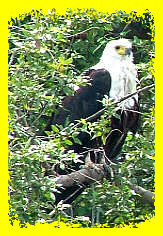
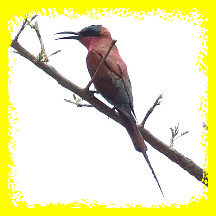
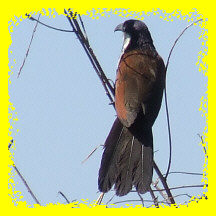
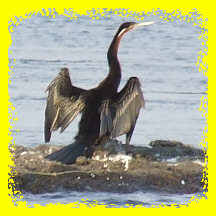
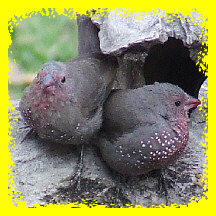
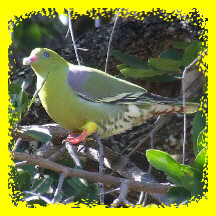
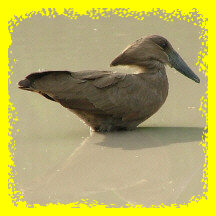
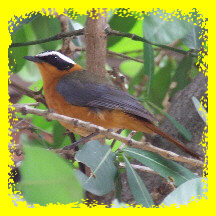

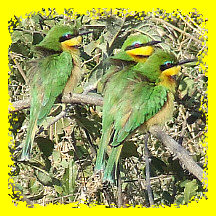
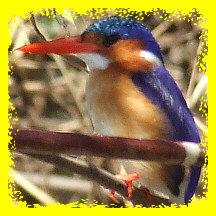
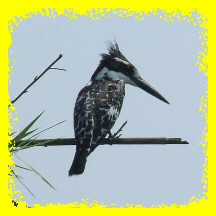
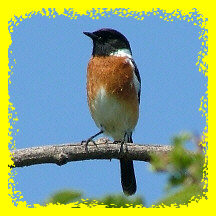
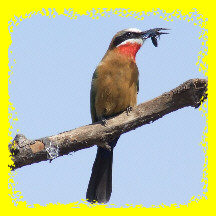
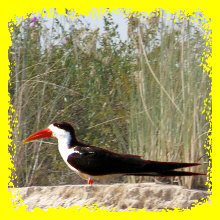
Back to:
Back to:

